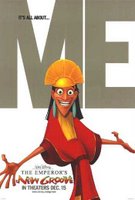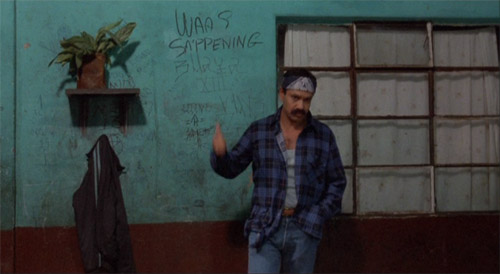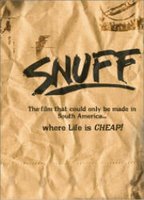The Emperor's New Groove
 The Emperor's New Groove is not the first Disney film to feature animated llamas: in an extended sequence in Saludos Amigos Donald Duck attempts to ride a llama, with predictably chaotic results. But the differences between the two llamas, and the two films, are salutory, and demonstrate perhaps the changing nature of Disney's relationship with its audience in recent years.
The Emperor's New Groove is not the first Disney film to feature animated llamas: in an extended sequence in Saludos Amigos Donald Duck attempts to ride a llama, with predictably chaotic results. But the differences between the two llamas, and the two films, are salutory, and demonstrate perhaps the changing nature of Disney's relationship with its audience in recent years.Saludos Amigos, as I have discussed before, presents itself as a quasi-educational, semi-anthropological exploration of the distinct and unfamiliar cultures found south of the border.
It is true that, as I have quoted Jean Franco saying of The Three Caballeros, in animating difference Disney also constructed a world that was distinctively Hollywood, more simulacrum than representation. But still it worked with and on found material to which it purported to maintain some kind of fidelity. So though Donald's llama is given anthropomorphic qualities, it is still recognizeably a llama, whose anthropomorphic animation brings it closer to the film's audience without eliminating altogether a sense of wonder at real world cultural difference.
By contrast, the llama in The Emperor's New Groove is no longer an animated animal, but rather the cartoon incarnation of what is already in the first place a cartoon character, an Inca ruler by the name of Kuzco who has been transformed into the beast by his wicked renegade advisor, Yzma. And Yzma herself is more a new incarnation of Cruella de Vil than a figure whose referents are to be sought outside the pre-existing universe of Disney tradition.
In other words, any claim to external referentiality has been definitively abandoned. Here, as in the movie's tagline, self-referentiality is everything: "It's all about me."
It would be pointless--and here more than ever, missing the point--to detail all the inaccuracies purveyed by this film. Suffice it to say, for instance, that though the civilization depicted is clearly based largely on the Inca empire, the opening title song states that we are in Mesoamerica, and at one point we see some children playing the typical Mexican party game of trying to break open a piñata.

So the culture purveyed is at best the image of some kind of generic pre-Columbian society, leavened (much like, say, The Flintstones) with aspects that are clearly only very slightly distanced versions of twentieth-century Americana, here most obviously the fast food restaurant to which Kuzco and his unlikely buddy, the peasant Pacha, repair for lunch.
But the film knows that its only referents are drawn from film itself, and indeed revels in the fact. It opens with Kuzco's voiceover commenting about the filmic process, and attempting to direct audience sympathy his way; early on, one of the characters is introduced as "theme tune guy"); and later, Kuzco also stops the film action in order to refocus our attention from a figure that he sees as peripheral to himself as protagonist. At one point Yzma's sidekick and love interest, Kronk, exclaims of one particular plot twist: "By all accounts, it doesn't make sense!"
In short, a double displacement is at work: first, from the US to Latin America in terms of the movie's ostensible content; but second, from external referentiality to internal self-referentiality, or perhaps better filmic self-consciousness and intertextuality.
This is not an "animated feature" in which a pre-existing story or history is transformed into caricatured form; it is a cartoon that pertains only to the world of cartoons. (Roger Ebert also notes the difference between animation and cartoon.) In this, it is closer to the Warner Brothers "loony tunes" than to Disney's traditional fare. Indeed, it is only the second Disney animation to present an original storyline, rather than an adaptation of a book, fairy tale, or the like. (And the first was The Lion King, which has serious epic or melodramatic ambitions wholly lacking in this light-hearted romp.) Meanwhile, the DVD commentary claims that this is the first feature-length animation to employ the trope common to shorter cartoons, of portraying characters stuck in a dark space by simply rendering their eyeballs.
(NB the film wasn't always going to be this way: its production history was troubled indeed, and what we have here is a much reworked version of a film originally to be called Kingdom of the Sun. See "The Long Story Behind the Emperor's New Groove" and "a precise and enlightening story of how Kingdom of the Sun became The Emperor's New Groove...")
As a cartoon, then, doubly displaced to its own alternative universe, the film is almost as abstract as a Mondrian painting, or perhaps a piece of classical music--better, the incidental film music that, in this movie as many others, works almost imperceptibly to build and fill in affective states. For The Emperor's New Groove concentrates on portraying affective and moral essences: Yzma, for instance, as a woman who is "scary beyond reason"; or Pacha as the epitome of goodness. In the film's own terminology, it portrays characters and their "grooves."
"Groove" isn't a bad way of thinking about affect. It captures the idea of a particular consistency, a particular capacity to affect and be affected, but also a certain proximity to habit: it takes of a shock to the system to jolt somebody out of their groove. We tend towards specific grooves, specific ways of grooving, in the absence of dramatic change. Here, the Emperor undergoes a series of disruptions (transformation into a llama, abandonment by his former confidantes, physical suffering) finally to change his groove, to habituate himself to a new affective state, to become generous rather than uncaring.
The film works to express, as only cartoons can, the purity of given characters' grooves, and to chart the inertia that prevents any easy deviations. (This is a constant theme in cartoons, where a change of state is always somehow delayed, always lags behind, archetypically when a character runs off a cliff and then hangs in mid-air before gravity suddenly, and belatedly, takes hold.) And it's in this displaced, cartoon version of pre-Columbian Latin America, with its vibrant colours and exaggerated imagery (green palm fronds, parrots, endless staircases, complex architectural patterns) that it can both express a groove and also imagine ways in which a groove can be changed.
Labels: disney, expressivity





